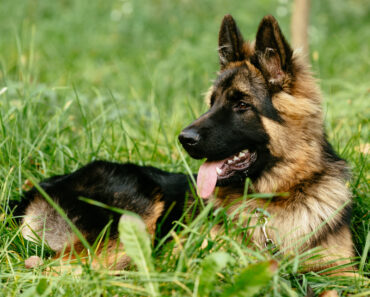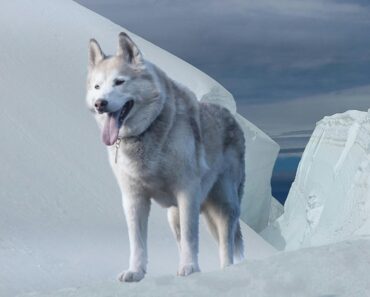Switching your dog to a raw food diet can greatly improve their health and happiness. But, it’s important to do it right to make sure it goes smoothly. This guide will help you safely add raw food to your dog’s diet. You’ll learn how to give your dog the best nutrition possible.
A happy dog chowing down on a bowl of raw food, surrounded by colorful fruits and vegetables.
Key Takeaways
- Understand the principles of a raw food diet and its benefits for dogs
- Learn how to source high-quality raw ingredients and prepare them properly
- Discover the importance of a gradual transition and balancing nutrients in a raw diet
- Implement safe handling and storage practices to ensure food safety
- Monitor your dog’s progress and address any common concerns or myths about raw feeding
Benefits of a Raw Food Diet for Dogs
Switching your dog to a raw food diet can bring many benefits for their health. This diet is similar to what dogs ate in the wild. It helps with digestion, makes their coat and skin healthier, and boosts their energy.
Improved Digestion and Nutrient Absorption
A raw food for dogs diet uses unprocessed ingredients that are easy for dogs to digest. This means they get more nutrients from their food. Dogs eating a barf diet for dogs often have fewer stomach problems like bloating and gas.
Shinier Coat and Healthier Skin
A natural diet for dogs has the right mix of proteins, fats, and nutrients for a healthy coat and skin. Raw diets give dogs healthy fats, minerals, and vitamins. This makes their skin and hair look great, with a shiny coat and smooth skin.
“Transitioning to a raw food diet was a game-changer for my dog’s coat and overall well-being. I’ve never seen them so vibrant and healthy-looking.”
Feeding your dog a raw food diet that matches their natural diet can make a big difference in their health and happiness.
Preparing for the Transition
Switching your dog to a raw food diet needs careful planning and knowledge. The key idea is to feed your dog like they would in the wild. This means giving them high-quality protein, fats, and organs full of nutrients.
Understanding the Raw Food Diet Principles
A raw diet for dogs includes several important parts:
- Muscle meat, which provides the primary source of protein
- Organ meats, such as liver and kidneys, which are rich in vitamins and minerals
- Bones, either whole or ground, which serve as a natural source of calcium and other minerals
- Healthy fats, like those found in fish, eggs, or fatty cuts of meat, to support skin and coat health
- Optional additions, such as vegetables, fruits, and supplements, to further enhance nutritional balance
Sourcing High-Quality Raw Ingredients
Getting ready for a raw diet means finding top-notch raw food or ingredients to make it yourself. When sourcing raw dog food, choose suppliers that focus on safety, tracing where the food comes from, and using ingredients full of nutrients. Or, you can prepare raw dog food at home by buying fresh, local meats, organs, and bones from reliable butchers or farmers.
| Comparison of Raw Dog Food Sourcing Options | Pre-Made Raw Dog Food | Homemade Raw Diet |
|---|---|---|
| Convenience | High | Low |
| Cost | Higher | Lower |
| Customization | Limited | High |
| Quality Control | Dependent on brand | Can be more controlled |
By learning about raw feeding and finding top-quality ingredients, you’re ready to make a healthy switch to a raw diet for your dog.
Raw Food Diet for dogs
The raw food diet for dogs has become more popular lately. It’s also known as the BARF (Biologically Appropriate Raw Food) diet or the Prey Model diet. This diet tries to give dogs the same food they would eat in the wild.
This diet includes high-quality, whole foods like muscle meat, organ meat, bones, and fruits and vegetables. It’s meant to give dogs a balanced diet, similar to what they’d eat in nature.
- The Prey Model diet is a raw food diet that closely replicates the prey animals that dogs would naturally consume, with a focus on muscle meat, organ meat, and bones.
- The BARF diet, on the other hand, includes a wider variety of raw ingredients, such as fruits, vegetables, and supplements, in addition to the meat-based components.
A balanced raw food diet for dogs should have proteins, fats, carbs, vitamins, and minerals. This helps support their health and well-being. By using a mix of whole foods, pet owners can make sure their dogs get the nutrients they need.
| Prey Model Diet | BARF Diet |
|---|---|
| Focuses on muscle meat, organ meat, and bones | Includes a wider range of raw ingredients, such as fruits and vegetables |
| Closely resembles the natural diet of dogs in the wild | Provides more variety and additional nutrient sources |
| Emphasizes the importance of whole, unprocessed foods | Allows for the incorporation of supplements as needed |
By learning about the different raw feeding options, pet owners can choose the best diet for their dogs. This ensures their dogs get the nutrients they need to be healthy.
Gradual Introduction to Raw Feeding
Switching your dog to a raw food diet should be done carefully to make it easy for them. It’s important to introduce raw feeding step by step for your dog’s health. This way, you can help your dog get used to a raw diet and give them the best nutrition.
Start with Small Portions
Start by adding a little raw food to your dog’s usual diet. Begin with a few teaspoons and slowly add more raw food over weeks. This helps your dog’s stomach get used to the new diet without upset.
Slowly Increase the Raw Ratio
- Week 1: 90% current diet, 10% raw food
- Week 2: 80% current diet, 20% raw food
- Week 3: 70% current diet, 30% raw food
- Week 4: 60% current diet, 40% raw food
- Week 5: 50% current diet, 50% raw food
This step-by-step method helps your dog get used to the raw diet. It lowers the chance of stomach problems during the transitioning to raw food diet.
Address Challenges and Concerns
Watch how your dog reacts during the switch and deal with any issues. You might see less hunger, loose stools, or changes in energy. If so, talk to your vet or a pet nutrition expert to keep your dog healthy.
Starting a raw feeding for dogs diet takes time and effort, but it’s good for your dog’s health. By doing it step by step, you can give your dog top-notch nutrition and help them adjust to a raw diet easily.
Balancing Nutrients in a Raw Diet
It’s key to balance your dog’s raw diet to meet their nutritional needs. This part talks about the importance of mixing different protein sources. This includes muscle meat, organs, and bones. It’s important to get the right mix to make sure your dog gets all the nutrients they need.
Protein Sources: Muscle Meat, Organs, and Bones
Creating a balanced raw diet for dogs means knowing the role of different protein sources. Muscle meat like chicken, beef, or turkey gives a lot of protein. Organs, like liver and heart, are packed with vitamins and minerals important for your dog’s health. Bones, whether ground or whole, are a great source of calcium and other key raw food nutrient requirements.
Getting the right mix of these protein sources is crucial for a balanced raw diet for dogs. Experts suggest a mix of about 80% muscle meat, 10% organs, and 10% bones. This mix ensures your dog gets a wide range of protein sources in raw dog food, covering their nutritional needs.
| Protein Source | Recommended Ratio | Nutritional Benefits |
|---|---|---|
| Muscle Meat | 80% | Provides essential protein |
| Organs | 10% | Rich in vitamins and minerals |
| Bones | 10% | Natural source of calcium and other nutrients |
By using this balanced method for raw feeding, you can make sure your dog’s diet is complete. This supports their health and happiness.
Safe Handling and Storage Practices
Switching your dog to a raw food diet means you need to handle and store food safely. Keeping the food safe is key for your dog’s health. By following important steps, you can lower the risk of contamination and keep the food tasty and healthy.
Proper Thawing and Preparation Techniques
Thawing and preparing raw dog food safely is crucial. Always thaw it in the fridge, giving it enough time to warm up slowly. Don’t leave raw meat at room temperature, as it can grow harmful bacteria. After thawing, be careful with the raw ingredients. Use separate cutting boards and utensils to avoid mixing with other foods.
Storing raw dog food safely is just as crucial. Keep raw meat, organs, and bones in the freezer at 0°F (-18°C) or colder. This keeps the food safe and nutritious. When it’s time to eat, thaw the right amount in the fridge, following the recommended times for a slow thaw.
Following these guidelines for thawing and preparing raw food keeps your dog’s meals fresh, safe, and full of nutrients. This supports their health and happiness.
“Proper handling and storage of raw dog food is crucial to maintain its quality and safety.”
A hand wearing a disposable glove holding a piece of raw meat on a cutting board, surrounded by various utensils and cleaning products, implying the importance of proper sanitation in handling raw dog food.
Monitoring Your Dog’s Transition
Switching your dog to a raw food diet is a big step. It’s important to watch how they do to make sure it goes well. By keeping an eye on how they adjust and any problems they might face, you can help them stay healthy and happy.
Signs of a Successful Raw Diet Transition
When your dog gets used to their new diet, you’ll see some good changes:
- Improved digestion and reduced gastrointestinal issues, such as reduced gas, bloating, or diarrhea
- Increased energy and activity levels
- A shinier, healthier coat
- Cleaner teeth and fresher breath
- Healthier skin with less itching or irritation
Potential Issues with Raw Feeding
Some dogs might have a tough time adjusting to raw food at first. This could mean:
- Gastrointestinal upset, such as loose stool or vomiting, especially in the first few weeks
- Changes in energy levels, with some dogs experiencing temporary lethargy or increased activity
- Adjustments to the new food texture and taste, leading to temporary picky eating
- Allergic reactions or sensitivities to certain raw ingredients
If you see any of these problems, talk to your vet or a canine nutritionist. They can help you fix any issues and adjust the diet. With time and careful watching, most dogs will get used to eating raw food just fine.
By keeping a close eye on your dog’s switch to a raw diet, you’ll know when they’re adjusting well or facing challenges. This way, you can make sure they have a good and healthy raw feeding experience.
Addressing Common Concerns and Myths
The popularity of the raw food diet for dogs is growing. This means more people are talking about its safety and if it’s good for dogs. We’ll look at the main raw diet concerns and raw dog food myths. We’ll give you facts to help you decide if a raw diet is right for your dog.
Debunking Raw Feeding Myths
Many think raw diets are risky because they might make dogs sick. But studies show that with the right handling and storage, raw meat diets are just as safe as processed pet foods. If you handle the food safely, your dog is unlikely to get a foodborne illness.
Some also believe raw diets lack important nutrients. But, a well-made raw diet can give your dog everything it needs for good health. It’s key to work with a vet or a trusted raw food brand to make sure your dog gets the right nutrients.
- Raw diets do not pose a higher risk of foodborne illness when handled properly.
- A well-formulated raw diet can provide complete and balanced nutrition for dogs.
- Switching to a raw diet needs careful planning and research, but it can be a safe and healthy choice for many dogs.
We aim to clear up these raw diet concerns and raw dog food myths. This way, pet owners can make better choices for their dogs’ diets.
Combining Raw and Kibble Feeding
Some pet owners don’t have to choose between a raw food diet and commercial kibble. They mix both, finding the right balance for their dog’s health. This way, they get the best of both worlds.
Balancing Both Diets for Overall Health
Mixing raw and kibble is key to a balanced diet for dogs. It’s important to get the right mix and switch slowly. This method gives dogs the good stuff from raw food, like better digestion and a shiny coat. It also makes sure they get all the nutrients from quality kibble.
Here are some tips to balance raw and kibble:
- Begin by adding a little raw food to your dog’s kibble, then slowly increase the amount.
- Watch how your dog reacts and adjust the mix to keep their diet balanced and healthy.
- Make sure the raw food, like muscle meat and bones, comes from safe sources.
- Talk to a vet or a dog nutrition expert to make sure your dog gets the right nutrients.
By using raw and kibble feeding together, you can enjoy the perks of both diets. This way, you’re balancing raw and commercial dog food for your dog’s health and happiness.
A bowl filled with a mix of kibble and raw meat, with a dog’s nose sniffing curiously at the food. A hand reaching in from the side to sprinkle some chopped vegetables on top of the mix. In the background, a shelf with bags of kibble and packages of raw meat stands next to a container labeled “raw food mix”.
Conclusion
This guide has shown how to safely switch your dog to a raw food diet. It’s important to know the basics, find good ingredients, and introduce it slowly. This way, you can give your dog a diet that’s right for them, full of nutrients, and supports their health.
Raw feeding has many benefits for dogs. It helps with digestion, boosts nutrient absorption, and makes their coat shiny and their skin healthy. Pet owners should watch their dog’s health closely and clear up any doubts or myths about raw feeding.
Switching to a raw diet can really change your dog’s life for the better. It can make them healthier and happier. By using the steps in this guide, you can start a journey to better health for your dog and strengthen your bond with them.
FAQ
What are the benefits of a raw food diet for dogs?
A raw food diet can boost your dog’s health in many ways. It improves digestion and nutrient absorption. It also makes their coat shiny and their skin healthy. Plus, it supports their overall well-being.
This diet is similar to what dogs ate in the wild. It meets their natural dietary needs.
How do I prepare for the transition to a raw food diet for my dog?
Before switching your dog to raw food, learn about its benefits and quality. Understand the right mix of protein, fat, and organs. Find good sources for raw dog food or ingredients to make it at home.
What are the different approaches to a raw food diet for dogs?
There are two main ways to feed your dog raw: the BARF and Prey Model diets. Both focus on a balanced diet with meat, organs, and bones. They also include whole foods rich in nutrients for your dog’s health.
How do I gradually introduce a raw food diet to my dog?
Introducing raw food to your dog should be done step by step. Start with a little raw food and watch how they react. Gradually add more raw food to their diet.
How do I ensure a balanced raw diet for my dog?
It’s key to balance your dog’s raw diet for their health. Mix different proteins like meat, organs, and bones correctly. This ensures they get all the nutrients they need.
What are the proper handling and storage practices for raw dog food?
Handling and storing raw dog food safely is crucial. Keep it at the right temperature and thaw it correctly. Use good preparation methods to avoid bacteria.
How do I monitor my dog’s transition to a raw food diet?
Watch your dog closely as they adjust to raw food. Look for changes in energy or stomach issues. Adjust their diet if needed to keep them healthy.
How can I address common concerns and myths about the raw food diet for dogs?
Many people worry about the raw food diet for dogs. This section clears up myths with facts. It helps you decide if it’s right for your dog.
Can I combine a raw food diet with a commercial kibble diet for my dog?
Some dogs eat both raw food and kibble. Make sure the mix is balanced for their health. Add raw food slowly and carefully to their kibble diet.





